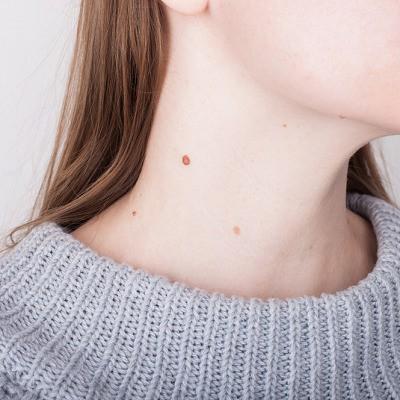Warts are a common skin condition caused by the human papillomavirus (HPV). While they are generally harmless, warts can be unsightly, uncomfortable, and sometimes difficult to remove. There are various treatments available to eliminate warts, ranging from over-the-counter remedies to professional medical procedures. The most effective treatment depends on the type of wart, its location, and individual factors like skin sensitivity and immune system health. Let’s explore the best options for wart removal in Islamabadand their effectiveness.
1. Over-the-Counter Treatments
Many people start with over-the-counter (OTC) products to treat warts, as they are convenient and readily available. The two most common OTC treatments are:
-
Salicylic Acid:
Salicylic acid is one of the most effective and widely used treatments for warts. It works by softening and exfoliating the layers of skin that make up the wart. Salicylic acid is available in various forms, including gels, creams, pads, and liquid solutions.
Effectiveness: Regular application (daily or every other day) for several weeks is necessary for optimal results. It is particularly effective for common and plantar warts but may require patience. -
Cryotherapy Kits:
OTC cryotherapy products use liquid nitrogen or similar compounds to freeze the wart. This causes the wart tissue to die and fall off after a few treatments.
Effectiveness: While these kits are convenient, they are not as strong as professional cryotherapy and may require multiple applications.
2. Professional Medical Treatments
For stubborn, painful, or recurring warts, professional medical treatments are often the most effective. These include:
-
Cryotherapy (Freezing):
Performed by a healthcare provider, cryotherapy involves the application of liquid nitrogen to the wart. The extreme cold destroys the wart tissue, and the wart typically falls off within a few days.
Effectiveness: This method is highly effective, especially for larger or more resistant warts, but may require several sessions. It can cause some discomfort or blistering. -
Laser Therapy:
In laser treatment, an intense beam of light is used to destroy the wart tissue. The procedure is quick and precise, making it an excellent option for warts in sensitive areas or for those that have not responded to other treatments.
Effectiveness: Laser therapy is very effective but can be expensive. It is often used for stubborn warts that have resisted other treatments. -
Electrosurgery and Curettage:
This procedure involves burning the wart tissue with an electric current (electrosurgery) and then scraping it off (curettage).
Effectiveness: It is effective for large or stubborn warts but may leave a small scar. Healing time can vary depending on the size and location of the wart. -
Immunotherapy:
For warts that resist conventional treatments, immunotherapy can be a solution. This method stimulates the immune system to fight the HPV virus. Examples include applying topical immune-boosting agents like imiquimod or injecting antigens directly into the wart.
Effectiveness: It is a good option for recurrent warts and works particularly well for individuals with a weakened immune system.
3. Natural Remedies
Some people prefer natural remedies for wart removal, often due to concerns about side effects or cost. While evidence supporting their effectiveness is limited, the following options are popular:
-
Apple Cider Vinegar:
Soaking a cotton ball in apple cider vinegar and applying it to the wart is a common home remedy. The acidic nature of the vinegar may help break down the wart tissue.
Effectiveness: Results vary, and it may take weeks to see improvement. Skin irritation is a potential side effect. -
Garlic:
Garlic contains antiviral properties that may help fight the HPV virus. Crushed garlic can be applied directly to the wart and covered with a bandage.
Effectiveness: Anecdotal evidence suggests some success, but scientific research is limited. -
Tea Tree Oil:
Known for its antimicrobial properties, tea tree oil can be applied to warts to reduce their size over time.
Effectiveness: Results are inconsistent, and it may not work for all types of warts.
4. Preventive Measures
While treating warts is essential, preventing their occurrence or recurrence is equally important. Here are some steps to minimize the risk of warts:
- Avoid direct contact with warts, including your own.
- Keep your hands and feet clean and dry, as moist environments promote HPV growth.
- Wear protective footwear in public showers, pools, and locker rooms.
- Avoid sharing personal items like towels, razors, or nail clippers.
- Strengthen your immune system through a healthy diet, regular exercise, and adequate sleep.
5. When to See a Doctor
Although many warts can be treated at home, it’s crucial to consult a doctor if:
- The wart is painful, bleeding, or changing in appearance.
- The wart is located on your face, genitals, or other sensitive areas.
- OTC treatments have been ineffective after several weeks of use.
- You have multiple warts or warts that keep coming back.
- You have a weakened immune system due to a medical condition or medication.
Conclusion
There is no one-size-fits-all solution for wart removal, and the best treatment depends on individual circumstances. Over-the-counter treatments like salicylic acid and cryotherapy are effective for many people, while professional treatments such as cryotherapy, laser therapy, and immunotherapy are better suited for stubborn or recurrent warts. Natural remedies can provide an alternative, but their effectiveness may vary. By understanding the available options and seeking professional advice when necessary, you can choose the most effective treatment for your specific needs and ensure smooth, wart-free skin.

